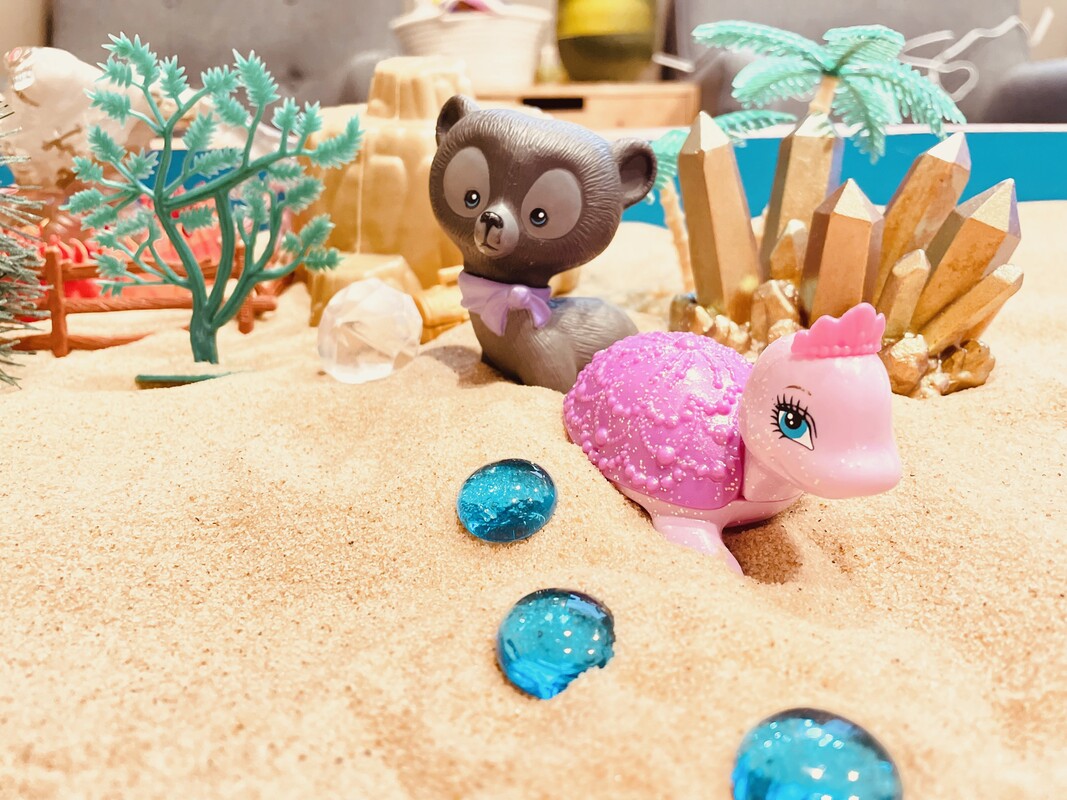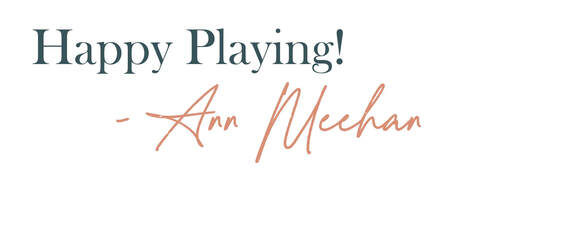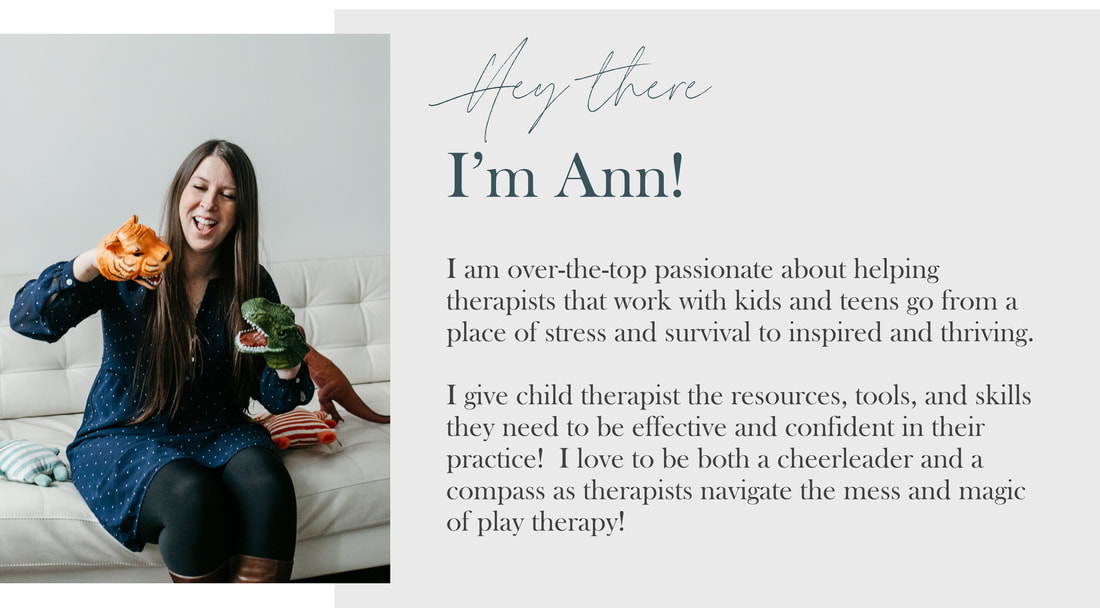|
If you were in one of my consultation groups you would have likely heard me ask “Are you trained in Sandtray” a billion times.
Why? It is one of my hands down favorite modalities for young kids up through adults. AND it was one of the earliest play therapy modalities I was trained in.
If you are curious about what exactly Sandtray is (or often referred to as Sand Therapy), it is a therapeutic modality where the client uses a tray filled with sand (or depending on your modality, sensory needs of your client, and practice it could be filled with other things) and miniatures to create worlds.
Sandplay is a specific modality that is Junian but Sandtray can be adapted to many other theories of therapy. See more about the differences HERE. How the therapist processes or experiences the tray with the client depends on their specific theory, training, or modality. But it is SO. MUCH. MORE. THAN. THAT. And it also requires so much more than gathering miniatures, getting a box of sand, and telling clients to make a world. So, if you are Sandtray Trained already you know the importance of your training on your ability to use this modality therapeutically for clients. If you haven’t had any formal Sandtray Training this is your sign to get trained! I wanted to share with you my top reasons I think every child therapist should have training in Sandtray! It’s an avenue into the subconscious and unconscious materials Sandtray provides an avenue into the subconscious and unconscious. The miniatures one selects, where they are placed, things that are moved or taken out, the layout of the tray (and so much more) can be such a deep level of expression of the self, perspectives, experiences, and the world. I can’t tell you how many times I have witnessed client trays or trays of my own where I learned something deep that wasn’t consciously selected for or placed in the tray. And the greater level of insight and processing is incredibly significant to healing and growth. It provides hemisphere integration The right hemisphere of our brain deals with the picture centers and emotions. The left hemisphere deals more with reason, logic, and problem solving. For psychological difficulties the Sandtray provides the space for visual expression in the tray leading to higher levels of hemisphere integration than just talking about it. Different levels of insight also happen when you can SEE the difficulty or issue rather than just thinking about it. It is a super tool for resistance Sandtray has been shown to be one of the most powerful tools for resistant clients, likely due to the nature of the safety of the tray where difficulties can be externalized. Also the nature and structure of sandtray is that clients can say as much or as little as they would like and it can feel like there is less pressure to verbalize. It’s fun My experience in my practice is that therapeutic material is much for FUN and easier for kids and teens to process and talk about when creating a tray. In my practice it is one of the most requested interventions for children - whether it is Child Centered Play Therapy, Cognitive Behavioral Play Therapy, or EMDR with kids. My tray is open and worlds are being created every day. Here are my top 4 reasons you should be trained in sandtray! I am hoping this has convinced you to get trained in this modality and add it as a tool to your practice! P.S. the tray above is not client material - just a fun pic of some of my favorite and most loved miniatures! If you are interested in getting trained in sandtray you HAVE to check out my training Creating Worlds: An Introduction To Sandtray Play Therapy! This training will prepare you from start to finish to start using Sandtray in your practice with kids and teens. Say hello to your step-by-step guide to sandtray HERE! Loading...
2 Comments
Marsi
3/4/2024 12:26:10 pm
Where would you recommend receiving sand tray training?!? I live in San Diego County. Thank You!
Reply
Ann Meehan
3/6/2024 06:52:31 am
Hi Marsi!
Reply
Leave a Reply. |
Hi, there!I'm Ann Meehan, an LPCC, Loading... Archives
July 2024
Categories
All
|
Privacy Policies | Terms of Use | Disclaimer
Contact
[email protected] | Copyright Meehan Mental Health Services 2022
Contact
[email protected] | Copyright Meehan Mental Health Services 2022







